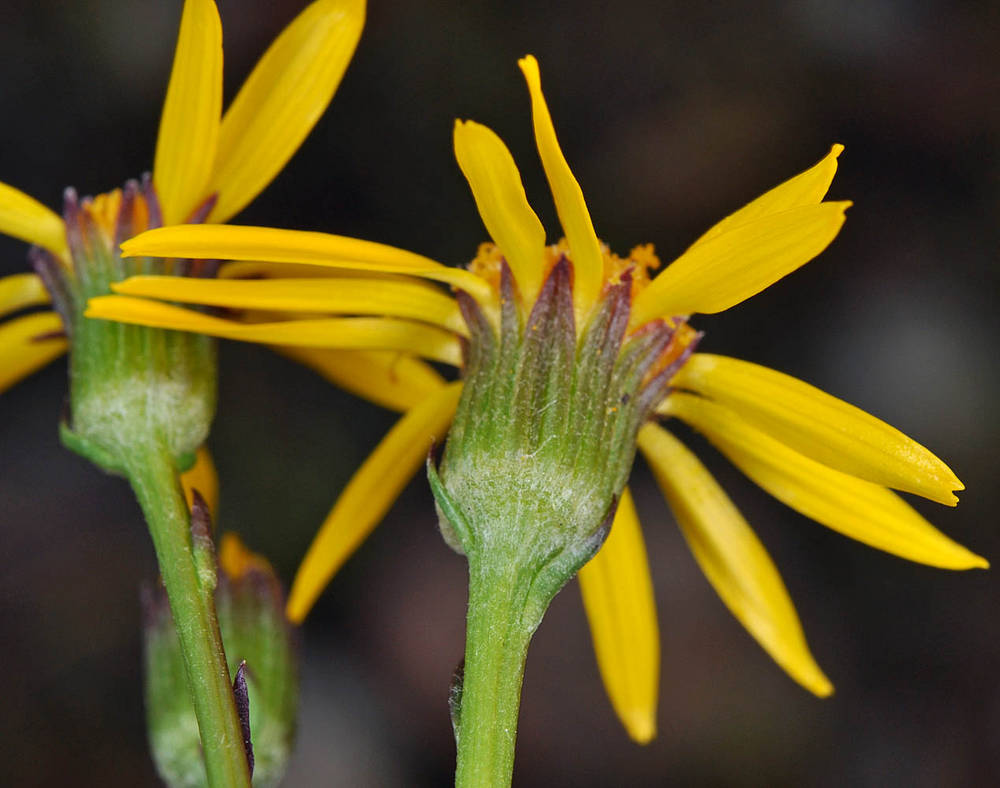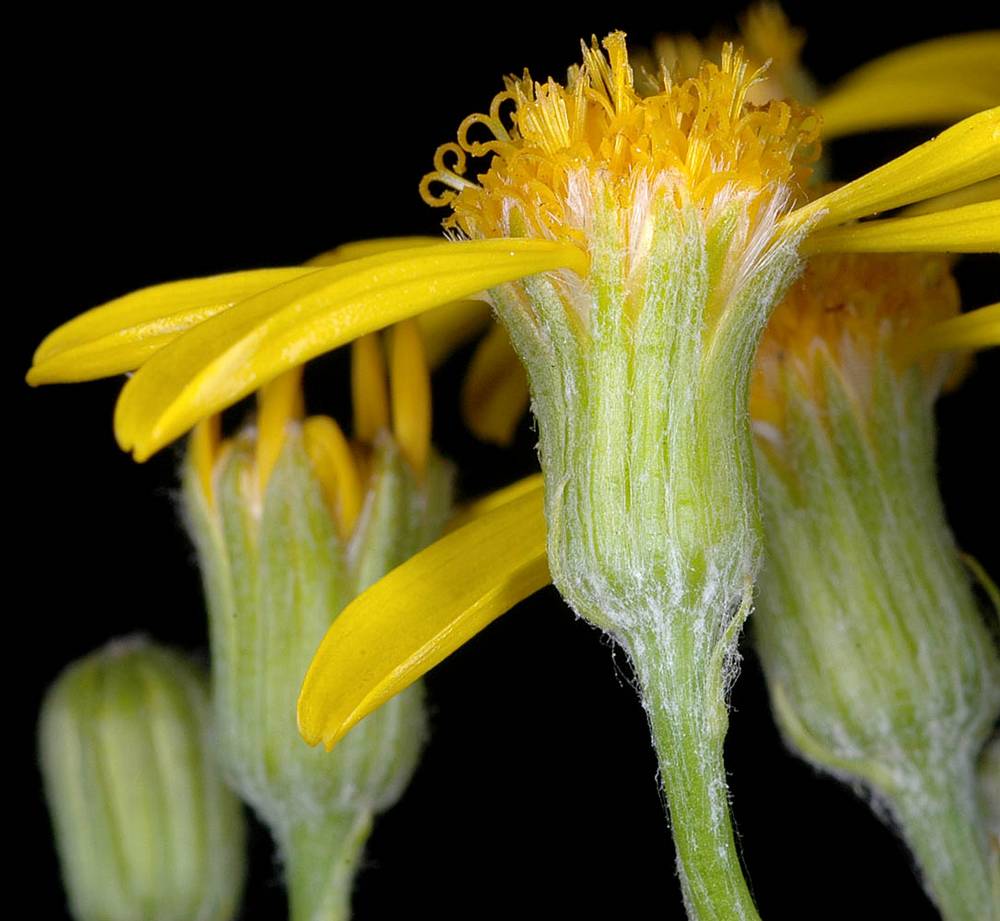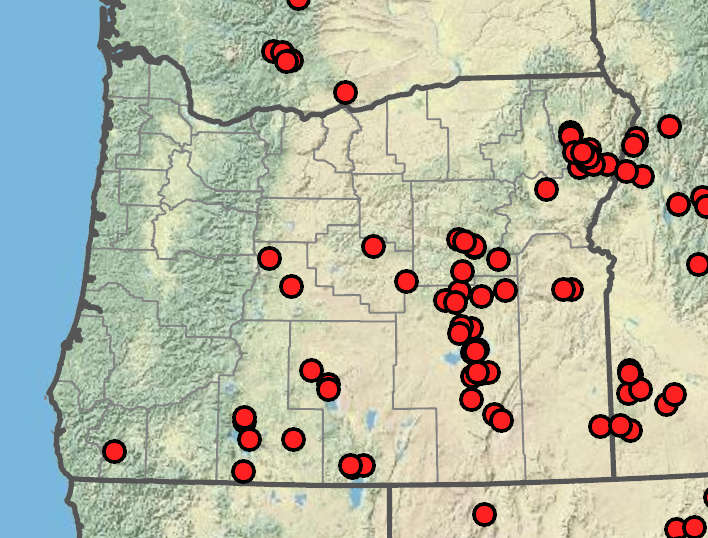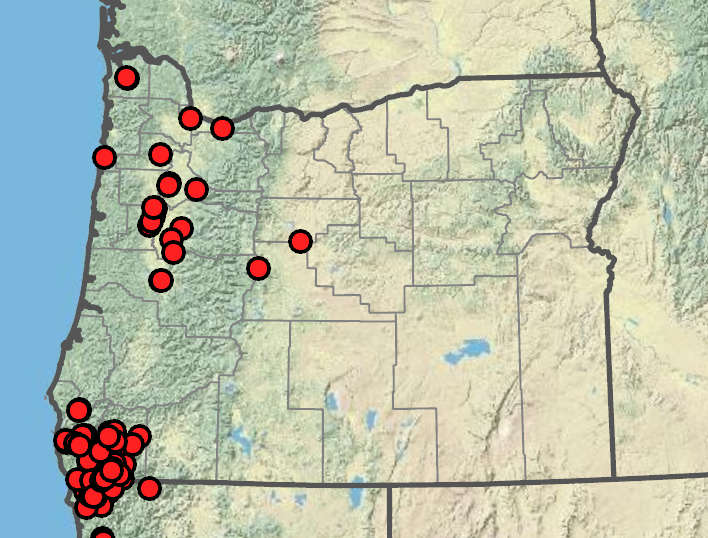Packera streptanthifolia
Packera macounii
cleftleaf groundsel, Rocky Mountain butterweed, Rocky Mountain groundsel
long-rayed groundsel, Puget butterweed, Siskiyou Mountains ragwort
1 or 2–5, clustered, glabrous or sometimes sparsely pubescent near base and in leaf axils.
1, sparsely to densely tomentose or glabrate.
blades oblanceolate to orbiculate; thick; turgid, bases tapering to contracted;
margins dentate, dissected; entire, subentire or weakly lobulate;
surfaces usually glabrous, sometimes pubescent, petiolate.
blades narrowly lanceolate to oblanceolate, bases tapering;
margins entire or shallowly toothed, slightly revolute, petiolate.
similar to basal, gradually reduced, petiolate or sessile.
gradually reduced;
upper bract-like; lower petiolate; upper sessile.
campanulate.
cylindric to narrowly campanulate.
8 or 13;
rays 5–10 mm.
8(13);
rays 8–10+ mm.
35–60;
corolla tubes 2–4 mm;
limbs 2.5–4 mm.
30–40+;
corolla tubes 2.5–3.5 mm;
limbs 2–3 mm.
(8)13 or 21, 4–7+ mm, green;
tips sometimes anthocyanic;
surfaces glabrous.
13 or 21, 5–7+ mm, green;
surfaces glabrous.
conspicuous.
0 or inconspicuous.
1–2.5 mm, glabrous;
pappi 3–6 mm.
3–4.5 mm, glabrous;
pappi 4–5 mm.
2–20+; in corymb- or subumbel-like arrays;
peduncles glabrous or sparsely tomentose, bracteate.
6–15+; in corymb-like arrays;
peduncles sparsely tomentose to glabrate;
bracts absent or inconspicuous.
=46, 92.
=46, 92.
Packera streptanthifolia
Packera macounii
Forests, open meadows, and valleys in dry to damp loamy soils. Flowering May–Aug. 400–2900 m. BR, BW, ECas, Lava, Owy, Sisk. ID, NV, WA; north to Yukon, northeast to Saskatchewan, east to WY, southeast to NM. Native.
Packera streptanthifolia includes weakly defined “phases” that have been treated as distinct species or as varieties. Characteristics used to define those taxa often overlap and are difficult to distinguish; some phases grade into each other.
Streams, roadsides, clearings, disturbed areas, coniferous woodlands in rocky soils, serpentine. Flowering Apr–Jul. 50–1400 m. Casc, CR, Est, Lava, Sisk, WV. CA, WA; north to British Columbia. Native.
Packera macounii is similar in overall morphology to P. cana. However, its leaves are narrower and commonly revolute. Although it is often cited as being collected on serpentine soils, it is not restricted to them.
Debra Trock
Debra Trock
- Local floras:
BC,
CA,
OR,
WA
- Local Web sites:
CalFlora,
CalPhotos,
Flora NW,
PNW Herbaria,
Turner Photog.
WildflowerSearch
iNaturalist (observations)
USDA Plants Database
- LBJ Wildflower Center
- SEINet
- Plants of the World Online
- Encyclopedia of Life
- Wikipedia
- Google Image Search





